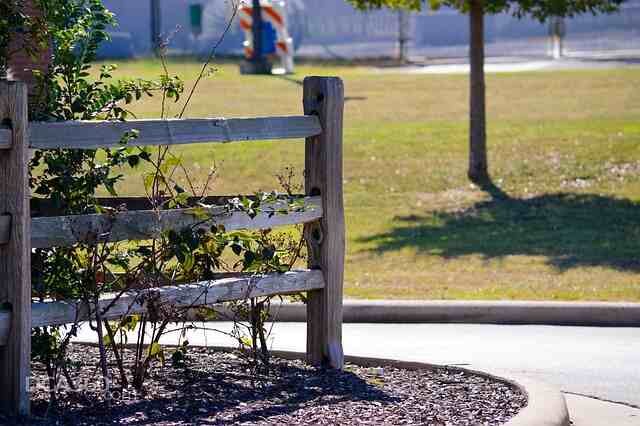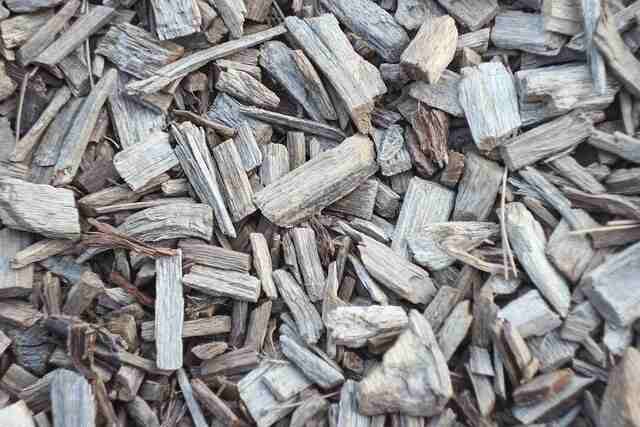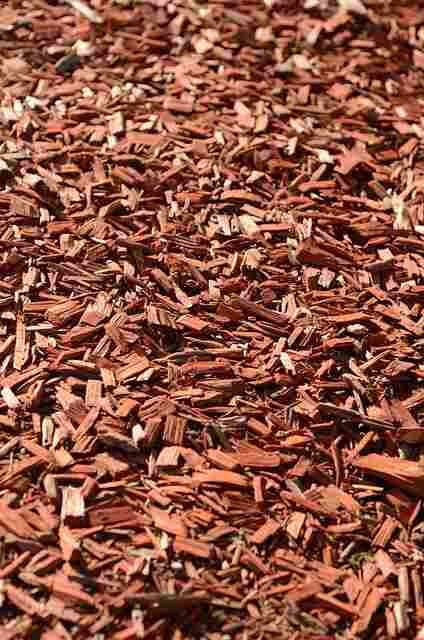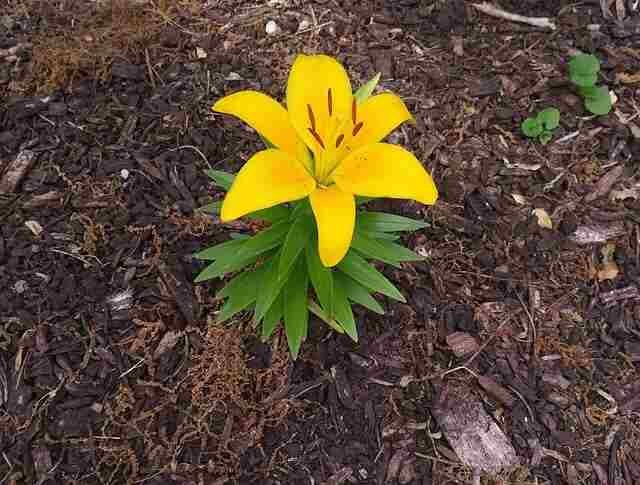In the present article, we’re investigating the entrancing and fundamental subject of mulching, a training that has reformed current cultivating. Mulching is essential for powerful weed control, dampness maintenance, and further developing soil wellbeing, making it a foundation of fruitful planting. Throughout the long term, different mulching methods have arisen, each offering interesting advantages and applications. In this article, we’ll investigate three significant mulching strategies that have significantly affected current planting: Ruth Strong’s No Work Planting Strategy, Pat Lanza’s Lasagna Cultivating Procedure, and Paul Gautschi Has returned to Eden Technique.
Ruth Stout's No Work Gardening Method

Ruth Significant’s no work formulating technique is a beginning philosophy that lastingly influences standard laying out practices. Her methodology solidifies covering the nursery perseveringly with a thick layer of feed mulch. This framework offers various benefits, including additionally made soil quality, dampness support, and viable weed covering. By keeping the soil covered the entire year, the roughage mulch one small step at a time isolates, propelling the soil with normal matter and enhancements. Strong’s method is particularly convincing for summer crops like peppers and is extensively used for creating potatoes. One of the key standards she underlined is the requirement for a liberal measure of mulch, encouraging landscapers to involve something like two times however much they could at first think important. By and by, this system experiences its difficulties, incredibly the interest of normal life like snakes, chipmunks, and voles, which track down cover in the critical mulch. Disregarding these evaluations, Ruth Striking’s basic mulching framework has changed into a staple in normal planting, enabling various maintenance men to mulch their nurseries in pre-summer after the soil warms up and again in gather time to safeguard the soil through the colder season. Her creative system has left an aiding through legacy, making developing more open and diminishing the fundamental for work inspired weeding and watering.
Pat Lanza's Lasagna Gardening Technique

Pat Lanza’s lasagna cultivating strategy is an innovative and productive way to deal with building rich establishing beds without the requirement for customary plowing. Presented in her book “Lasagna Planting,” distributed in 1998, this strategy includes layering different sorts of natural make a difference to make a rich, manure like bed that emulates the construction of lasagna. The cycle begins with layering materials like fertilizer, peat greenery, papers, destroyed leaves, and other natural matter. These layers separate over the long haul, bringing about a supplement thick and very much organized soil ideal for planting. A run of the mill lasagna bed comprises of no less than six layers, which can require a little while to decay and merge into ripe soil completely. Nonetheless, present day variations of this technique have demonstrated the way that even a couple of layers can be viable, particularly in regions bountiful with night crawlers that assist in the deterioration with handling. To make a lasagna bed, start by setting out a layer of cardboard or paper to smother weeds, trailed by substituting layers of green materials like grass clippings or kitchen scraps and earthy colored materials like leaves or straw. This method improves the dirt as well as advances water maintenance and decreases the requirement for regular weeding. While the full lasagna planting technique might require huge starting exertion and tolerance, its standards can be adjusted for speedier outcomes, making it a flexible and significant strategy for natural grounds-keepers.
Back to Eden Method by Paul Gautschi

The Back to Eden system, pushed by Paul Gautschi in the 2011 story “Back to Eden,” improved the use of wood contributes developing by propelling a trademark, conservative method for managing soil prosperity and effectiveness.This strategy integrates covering the dirt with a critical layer of wood chip mulch, which tirelessly recharges itself as the chips confined, saving a cool and tacky climate ideal for plant improvement. Planting is finished by making little manure enhanced openings inside the mulch layer, giving a quick supplement lift to the youthful plants. One of the huge benefits of this technique is its capacity to moderate water, lessen the requirement for substance manures, and smother weeds normally. Over the long run, the dirt construction improves essentially, turning out to be more permeable and equipped for holding dampness. The Back to Eden technique has found specific blessing in metropolitan food woods, where natural product bearing trees, bushes, and yearly harvests are filled together locally centered setting. In these conditions, the strategy’s capacity to help different plantings with negligible information is exceptionally esteemed. While wood chips are the essential mulch utilized, choices like spoiled leaves, leaf form, or roughage can likewise be powerful when wood chips are inaccessible. This strategy lines up with the standards of permaculture and natural planting, offering a manageable and powerful method for developing solid, useful nurseries.
Popular Mulching Materials for Beginners
With regards to mulching, fledgling landscapers have different materials to browse, each with its extraordinary advantages and applications. One of the most famous mulching materials is destroyed wood or bark, which is broadly accessible and compelling at holding dampness, stifling weeds, and adding natural make a difference to the dirt as it decays. To utilize destroyed wood or bark, spread a 2-3 inch layer around your plants, trying to keep it a couple inches away from the stems to forestall decay and nuisance issues. Another magnificent choice is straw or feed, which is especially valuable in vegetable nurseries. Straw and feed are lightweight, simple to spread, and assist with holding soil dampness while smothering weeds. They additionally deteriorate moderately rapidly, adding supplements once more into the dirt. Apply a thick layer of straw or roughage around 4-6 inches deep to guarantee viable inclusion. Be mindful of utilizing roughage, as it might contain weed seeds, so straw is many times the favored decision. Fertilizer is one more awesome mulching material valued for its supplement rich arrangement. Manure further develops soil ripeness as well as improves soil design and water maintenance. To involve manure as mulch, apply a 1-2 inch layer around your plants, tenderly working it into the top layer of soil whenever wanted. This strategy gives a quick supplement support and continuous advantages as the manure keeps on separating. Grass clippings are a simple and affordable mulching choice for some grounds-keepers. They are especially wealthy in nitrogen, which can be valuable for verdant plants. In the wake of trimming your grass, spread a far layer of grass clippings around 1-2 inches thick around your nursery beds. Make certain to utilize untreated grass clippings to try not to bring synthetic compounds into your nursery. Permit the clippings to dry somewhat prior to applying them to keep them from matting and making a hindrance that could restrain water infiltration. Leaves are a quickly open and strong mulching material, especially in the fall. Obliterated leaves separate quickly, adding significant regular matter and enhancements to the soil. To include leaves as mulch, accumulate fallen leaves, shred them using a grass shaper or leaf shredder, and spread a 2-3 inch layer around your plants.. Destroying the leaves helps them decay quicker and keeps them from framing a thick mat that can cover plants. Finally, wood chips are a well known decision for some grounds-keepers, particularly those following the Back to Eden technique. Wood chips give superb dampness maintenance, weed concealment, and long haul soil improvement as they deteriorate gradually. To utilize wood chips, spread a 3-4 inch layer around your plants, guaranteeing it doesn’t contact the plant stems. Over the long haul, the wood chips separate, upgrading the dirt’s natural substance and construction.
Common Mulching Mistakes
While mulching can fundamentally improve the wellbeing and efficiency of your nursery, it’s vital to keep away from normal mix-ups that can sabotage its advantages. One of the greatest mulching botches is applying mulch too thickly or too daintily. A mulch layer that is too thick can make a boundary that keeps water and air from arriving at the dirt, prompting waterlogged circumstances and root decay. On the other hand, a layer that is too slight won’t successfully smother weeds or hold dampness. Go for the gold layer of 2-4 inches, contingent upon the material utilized, to find some kind of harmony.
Another regular mistake is heaping mulch straightforwardly against the stems trees, frequently alluded to as well of lava mulching. This training can trap dampness against the plant’s base, empowering decay, illness, and nuisance pervasions. To stay away from this, keep mulch a couple inches away from the stems or trunks, making an unmistakable space that takes into consideration legitimate air flow.
Involving some unacceptable kind of mulch for your particular nursery needs can likewise be inconvenient. For instance, involving high-nitrogen grass clippings in over the top sums can prompt nitrogen consume in certain plants, while utilizing mulch with weed seeds like roughage can acquaint undesirable weeds with your nursery. Continuously pick mulch that is proper for your nursery’s particular prerequisites and guarantee it is liberated from impurities.
Forgetting to renew mulch as it breaks down is another normal error. Natural mulches separate after some time, step by step losing their adequacy in weed concealment and dampness maintenance. Routinely check your mulch layers and add more depending on the situation to keep an ideal profundity and guarantee proceeded with benefits.
Over-mulching or utilizing unseemly materials like newly chipped wood or unshredded leaves can likewise present issues. New wood chips can tie up nitrogen in the dirt as they decay, possibly keeping your plants from this fundamental supplement. It’s ideal to let wood chips age for a couple of months prior to applying them. Likewise, unshredded leaves can shape a thick mat that keeps water and air from arriving at the dirt. Destroying leaves before use assists them with separating all the more effectively and maintains a strategic distance from this issue.
Impact of Inorganic Mulches
At last, utilizing inorganic mulches like dark plastic or scene texture disregarding their drawn out effect can be a slip-up. While these materials can really stifle weeds and hold dampness, they can likewise repress the regular breakdown of natural matter and decrease soil fruitfulness after some time. They may likewise establish an aloof climate for advantageous soil living beings like night crawlers. Assuming that you decide to utilize inorganic mulches, screen your dirt wellbeing and consider joining them with natural mulches to keep up with soil essentialness.
Conclusion
What’s more, that’s basically it, a complete manual for three significant mulching strategies and materials to upgrade your nursery’s wellbeing and efficiency. By understanding the procedures spearheaded by Ruth Heavy, Pat Lanza, and Paul Gautschi, and by keeping away from normal mulching botches, you can establish a flourishing and practical nursery climate. Whether you pick roughage, layered natural matter, or wood chips, the right mulching technique can have a tremendous effect. Happy gardening.



